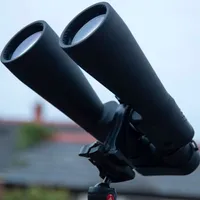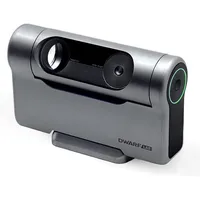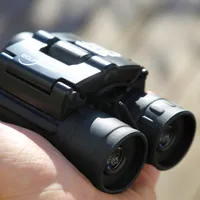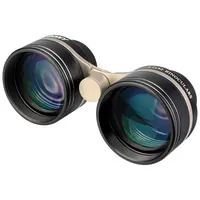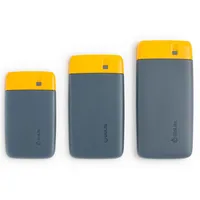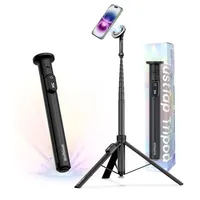Everything you need to go stargazing this winter and into 2026
The best gear to help you capture the Orion Nebula, see a close-up of a ‘Christmas Star’ and get the best from the night sky in 2026.

Are you ready for a year of stargazing? Skywatchers have a plethora of fascinating sights in late-2025 and throughout 2026, chief among them a couple of eclipses — a ‘blood moon’ total lunar eclipse on March 3, 2026, followed by a total solar eclipse on August 12. For planet-hunters, the year starts well with Jupiter’s opposition on January 10, with the giant planet also involved in some close conjunctions with Venus (June 9) and Mars (November 16). Meanwhile, Saturn comes to opposition on October 4. Add a couple of major meteor showers peaking in dark skies — the Perseids and Geminids — and a supermoon on December 24 and it looks like a year worth preparing for.
From a refractor and smart scope for planets and the deep-sky to the best binoculars for clusters and eclipses — and even a recliner built for meteor showers — these 10 picks will kit you out for a year of skywatching.
Reason: The Pleiades (M45) from November to April
The rising of the sparkling Pleiades, an open star cluster in the constellation Taurus, is a sure sign that winter is approaching in the Northern Hemisphere. Around 440 light-years from the solar system, about six or seven stars are visible to the naked eye, hence its nickname, the ‘Seven Sisters’. However, a telescope sees straight through the Pleiades. Cue a pair of binoculars like Nikon’s 10x50 Aculon A211, whose 10x magnification and 50mm objectives are perfect for seeing over 1,000 stars in the Pleiades in a bright, sharp 6.5-degree field of view. With a solid build, a smooth focus wheel and with tripod fixings, they’ll be all you need to unlock a layer of the night sky between naked-eye and telescopic.
Reason: Total lunar eclipse on March 3 (North America)
On March 3, 2026, the moon will turn a reddish copper color for 58 minutes in the final total lunar eclipse until 2029. Visible most easily from the western half of North America (and not visible in Europe), the best way to get a good view is via big binoculars like the Celestron SkyMaster 15x70, whose 15x magnification and 70mm objective lenses will allow you to see craters on the moon as Earth’s shadow creeps across the lunar surface. During totality, the night sky — previously bleached by a full moon’s brightness — will temporarily turn inky black, with the Celestron SkyMaster 15x70 perfect for grabbing great views of the Andromeda Galaxy, the Orion Nebula and the Pleiades open cluster. Consider using the included tripod bracket for rock-steady views.
Also read: March 2026 total lunar eclipse: Everything you need to know about the next 'blood moon'
Reason: Jupiter at opposition, January 10, 2026
Once every 13 months, the solar system’s “giant planet” comes to opposition as the Earth moves between it and the sun. It’s therefore at its biggest, brightest and best — not just on opposition night, but for a month either side. In late 2025, Jupiter will do its best to appear as the ‘Christmas Star,’ dominating the night sky from dusk through dawn, but you’ll need a good refractor telescope to get the best views. This entry-level 70mm achromatic refractor features a simple alt-azimuth mount and provides excellent views of not only Jupiter, its distinctive pink cloud bands and its four moons, but also Saturn’s rings and the moon’s craters.
Reason: Orion Nebula (M42) from November-April
If you’ve ever wanted to try your hand at astrophotography but can’t stand the idea of all the complexity, there’s only one place to start — a smart telescope and the Orion Nebula. The closest, brightest star-forming region to the solar system, it climbs into the south in the late evening all winter and is the best deep-sky showpiece for beginners. It’s the ideal first target for the Dwarflab Dwarf 3 smart telescope, an almost pocket-sized motorized device that you can pop onto any tripod. Its simple 35mm f/4.3 optics use a Sony IMX678 sensor, with dual lenses that help you find an object, then zoom in. It then live-stacks 10-second exposures to reveal incredible detail from deep-sky objects — perfect for the Orion Nebula, even from a light-polluted backyard.
Reason: Solar eclipses on February 17 and August 12, 2026
The first solar eclipse of 2026 is an annular solar eclipse on February 17, 2026, but its ‘ring of fire’ will only be seen in Antarctica, with a partial eclipse for southern Africa. A far bigger event takes place on August 12, when a total solar eclipse will be visible in Greenland, Iceland and Spain — with a partial eclipse visible to nearly a billion people across Europe and northeastern North America. During these events, you must observe the sun safely — and that means eclipse glasses and/or a pair of the best solar binoculars. At just 11 oz / 316 g, the most travel-friendly option is the Celestron EclipSmart 10x25 roof prism binoculars, which use solar filters that block infrared and ultraviolet light, as well as 99.99% of visible light, transmitting only a safe fraction to your eyes.
Reason: The Winter Circle stars from January to April
The naked eye has its limitations, but the leap to large binoculars and telescopes can easily rob the budding stargazer of that wide-eyed, immersive view of the night sky that sparked their interest in the first place. The SVBONY 2.1x42mm astronomy binoculars feature 42mm objectives and a modest 2.1x magnification that create a vast 26-degree field of view of the night sky that’s perfect for constellations and for vast shapes like the ‘Winter Circle’. A circle of six bright stars around the constellation of Orion, it begins and ends with bright Sirius, low in the south. From this bright star, move your binoculars to the right for Rigel in Orion underneath Orion’s Belt, up to orangey Aldebaran in Taurus, left to Capella in Auriga, highest, down to Pollux in Gemini, then Procyon in Canis Minor. Return to Sirius and you’ve done it — you’re a stargazer now.
Reason: Know what’s coming next in the night sky
Perfect for naked-eye stargazers in mid-northern latitudes who don’t want to miss out on anything, this month-by-month wall almanac turns stepping outside into a guided tour. Overhead star maps make it easy to find stars and constellations, follow planets and be in position to see the full moon rise, while underneath is a timeline for each month with moon phases and conjunctions. It’s put together by Callum Potter, Director of the British Astronomical Association’s Deep Sky Section.
Reason: Topping up a smartphone or smart telescope
Admit it — you use stargazing apps when you don’t know what you’re looking at. Even experienced stargazers do just that, but it can lead to your smartphone running low on power, particularly on cold nights, which reduces battery life. That goes double if you’re using a smart telescope — the smaller, entry-level models of which tend to have relatively short battery life. Cue the BioLite Charge 80 PD, a rugged, travel-ready 20,000 mAh power bank that keeps your stargazing kit alive all night. It comes with USB-A and USB-C and even recharges a laptop.
Reason: Photographing the winter Milky Way
The northern hemisphere’s night sky in summer is famous for a bright Milky Way streaming down to the southern horizon, but it’s also visible in winter. From Cassiopeia in the northeast to Orion in the south, you’ll see a sky full of stars around the new moon that are begging to be captured on camera. The latest smartphones come equipped with powerful low-light sensors that make them ideal for the job, but you do need some support. Compact, adjustable and opening with just a tap on the ground, KraftGeek’s JustTap Magnetic Phone Tripod utilizes a pad that’s five times stronger than MagSafe, providing rock-steady support for long exposure shots. A wireless Bluetooth remote — magnetically attached to one of the legs — eliminates blur and makes hands-in-pocket imaging easier in cold conditions.
Reason: Perseid meteor shower peak, August 12-13, 2026
This year’s Perseid meteor shower peak will occur in the dark skies of a new moon. However, to properly enjoy its 100+ ‘shooting stars’ per hour at night means avoiding a neckache. A unique recliner designed for meteor-watching comfort, the Nemo Stargaze EVO-X leans back smoothly with a shift in weight, providing excellent head and neck support for extended stargazing sessions. The build is tough, the setup is quick and the seat itself features smart touches, such as a phone/drink pocket, as well as a padded headrest. All you need now is a campsite at a Dark Sky Place.
Once you’ve got all the gear and an idea of what you want to see in the night sky, think about the sky, which needs to be dark and clear. Choose moonless nights between the last quarter moon and a few days after the new moon for the darkest skies, preferably using a light pollution map to improve the view — and don’t forget the weather forecast.
Breaking space news, the latest updates on rocket launches, skywatching events and more!

Jamie is an experienced science, technology and travel journalist and stargazer who writes about exploring the night sky, solar and lunar eclipses, moon-gazing, astro-travel, astronomy and space exploration. He is the editor of WhenIsTheNextEclipse.com and author of A Stargazing Program For Beginners, and is a senior contributor at Forbes. His special skill is turning tech-babble into plain English.
You must confirm your public display name before commenting
Please logout and then login again, you will then be prompted to enter your display name.

